Along Came A Spider: Alfa Romeo's Beloved Open-Air Sports Car Turns 50
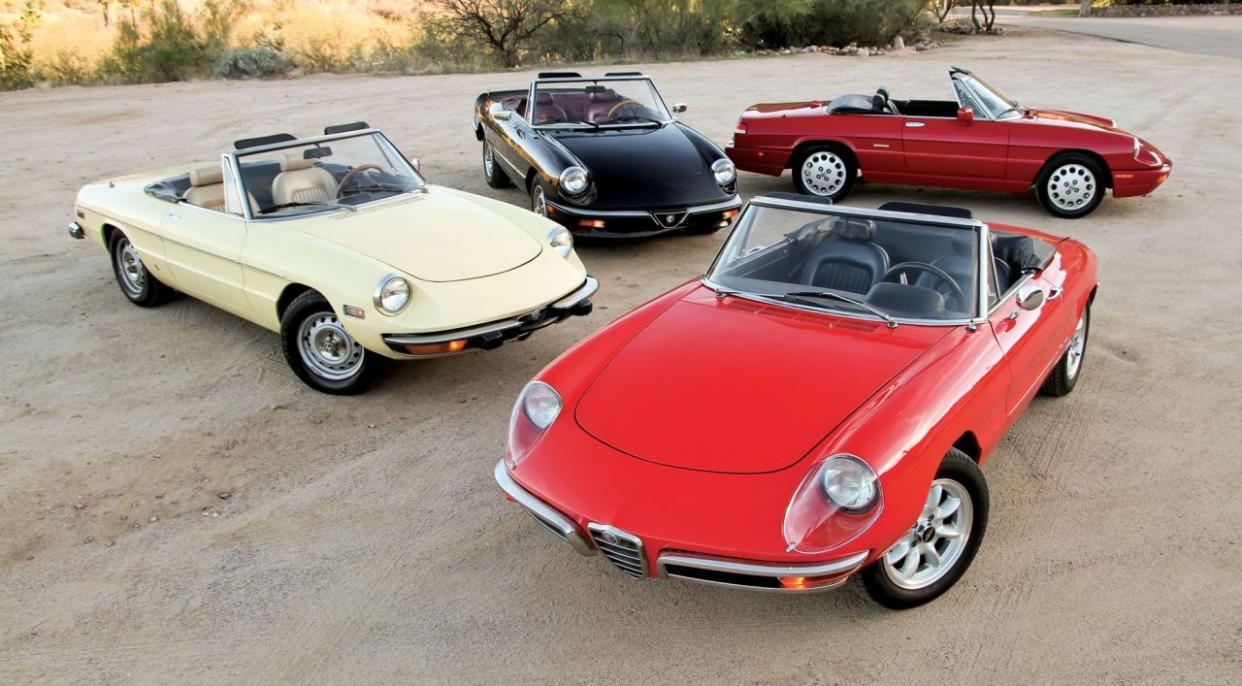
A quartet of Alfa Romeo Spiders. Photos by Matthew Litwin and Jeff Koch.
The Pininfarina-designed two-seat roadster debuted by Alfa Romeo in 1966 was not the company’s first attempt at building a Spider, but it was by far its most successful. Even today, over two decades after the last new Alfa Romeo Spider model was offered on these shores, the car remains the brand’s most-recognized product, thanks in part to its starring role in the 1967 blockbuster, The Graduate. As Italian semi-exotics go, the Spider is an attainable dream car, and in 2016, the Giulia-based Alfa Romeo Spider celebrates its golden anniversary.
Related: FCA reopens the Alfa Romeo Museum
The term “spider” (always with an “i” and not a “y” when speaking of Italian cars) refers to any lightweight sporting roadster, but its evolution goes farther back than the automobile. Originally, a “spyder phaeton” was a lightweight and open-top horse carriage, built with two or four wheels, and the name logically carried over to the automobile in the early days of the 20th century. While Alfa certainly produced such vehicles in the prewar years, its Giulietta Spider was the first Alfa Romeo marketed with the Spider name, debuting in 1955.
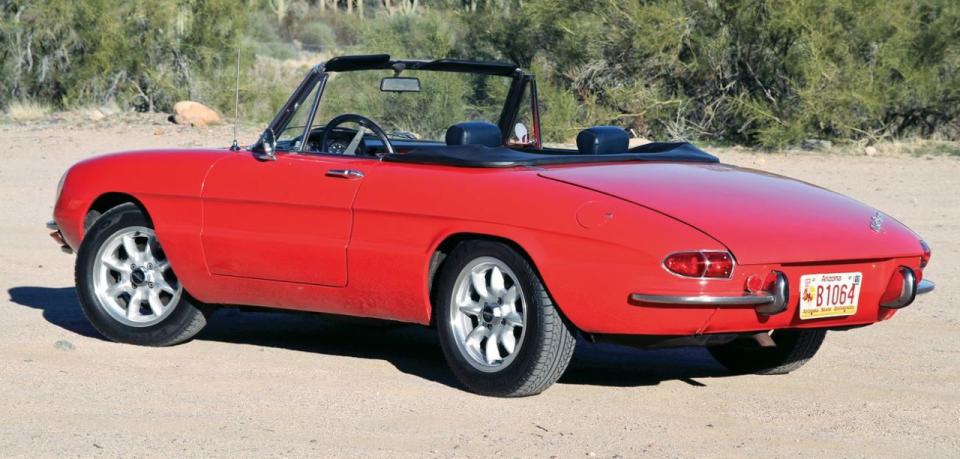
1969 Alfa Romeo 1750 Spider Veloce, owned by Rick Mahrle.
In 1962, Alfa Romeo debuted the Giulia (known as the 105-series), which replaced the 101-series Giulietta. Ultimately, the Spider would migrate to this platform, but more commercially desirable sedan and wagon variants were introduced first. Design partner Pininfarina went back to concept cars for the new Spider’s styling, choosing elements from the 1956 Super Flow, the 1957 Super Flow 2, the 1959 Tre S, and the 1961 Giulietta Spider Speciale Aerodinamica (which came closest in appearance to the production variant).
Related: Design firm Pininfarina acquired by Mahindra
It would take another four years for Alfa Romeo to introduce the new Spider, which first appeared in March of 1966 at the Geneva Motor Show. Oddly enough, it debuted without an official name, referred to as the “Spider 1600” for the size of the four-cylinder engine beneath its sloping hood. A contest was announced to choose the name of the new Alfa, and in July of 1966 the car became the Alfa Romeo Duetto Spider (at least temporarily).
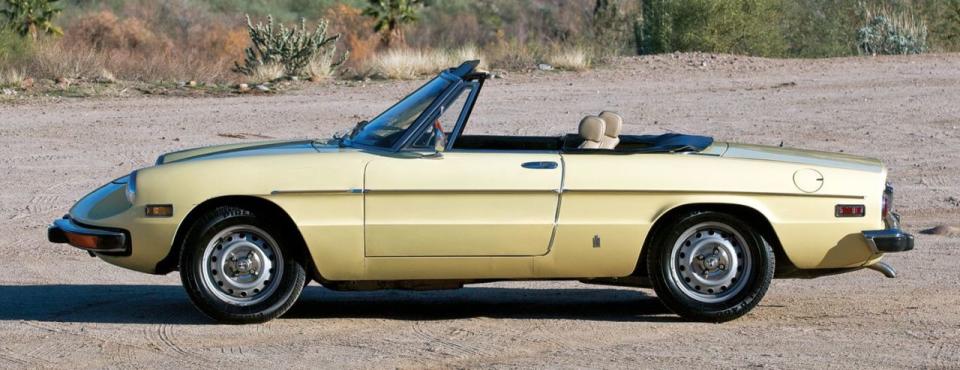
1973 Alfa Romeo 2000 Spider Veloce, owned by Russ Staub.
On paper, the new Duetto Spider had much to offer. Its all-alloy engine featured steel cylinder liners for durability, and its double-overhead cam design and hemispherical heads spoke to Alfa’s racing past. At a time when four-speed transmissions were the norm, the Duetto Spider came with a five-speed, and four-wheel disc brakes were standard instead of the typical front-disc, rear-drum arrangement. All this came at a price, however, and in certain markets (Britain, for example), the Alfa was more expensive than the Lotus Elan and less than 100 pounds (then, $280) cheaper than a Jaguar E-type. In America, its $3,950 sticker price made it $1,343 more expensive than an MGB and $1,051 more than a Triumph TR4A.
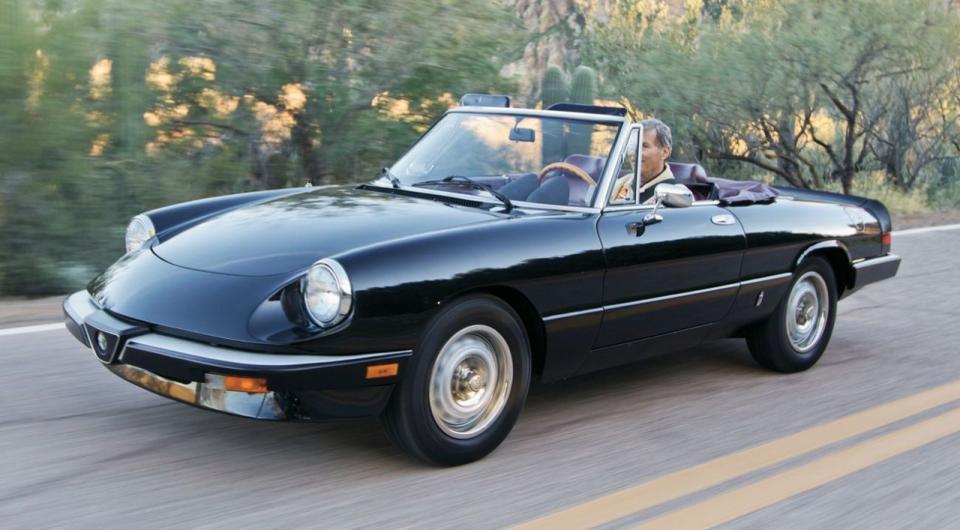
1985 Alfa Romeo Spider Graduate, owned by Bill Greenslade.
Though pricing certainly impacted initial sales, it was the car’s styling that proved most controversial. Even Italians panned the lines of the Duetto Spider, referring to it as “osso di sepia,” or “cuttlefish bone,” a jab at its boattail rear styling. As Chris Rees points out in Original Alfa Romeo Spider, Road & Track called its shape, “a contrived design with meaningless styling gimmicks,” while Motor Sport was even more blunt, calling the Alfa “scarcely pretty.” It’s ironic, perhaps, that the original cars, which lasted until the Kamm tail debuted in 1969, now carry the highest price tags.
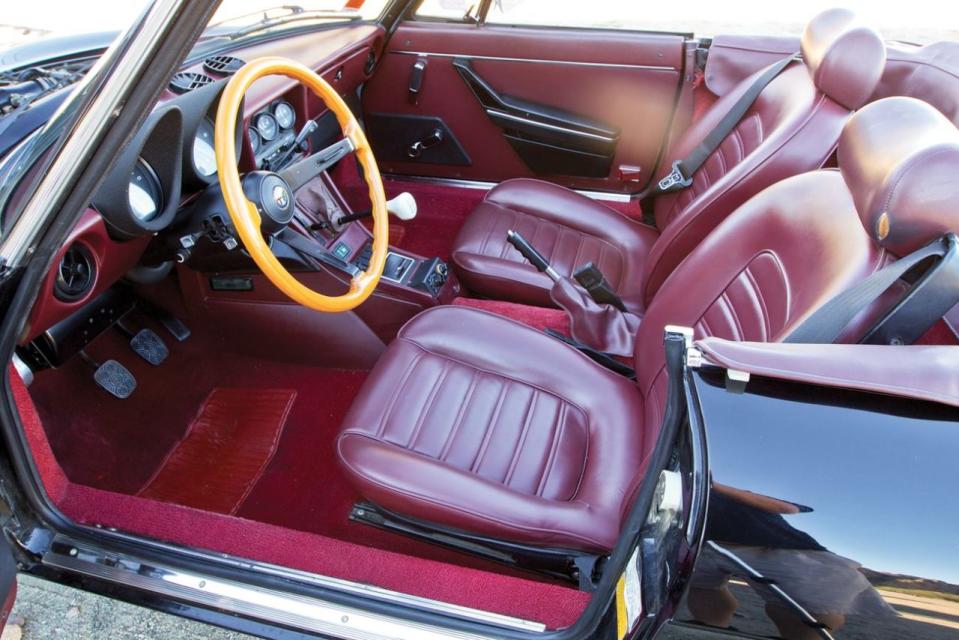
The cabin of Bill’s 1985 Spider.
In America, the Duetto Spider disappeared for 1968, unable to meet U.S. emission control regulations with its dual-carburetor setup. In 1969, the Spider reappeared on these shores without the Duetto name (which had been dropped worldwide due to trademark conflicts), but equipped with Spica fuel injection and a larger, 1,779-cc four-cylinder engine. Instead of promoting this as a 1.8-lter, Alfa Romeo instead opted to refer to it as a 1,750; as Terry Shea points out in the May 2015 issue of Hemmings Sports & Exotic Car, this was done as a nod to the company’s prewar 6C 1750, which proved dominant in prewar European racing.
Related: After a 30-year absence, Fiat relaunches the Spider
The Kamm tail appeared for the 1970 model year, and as bumper regulations grew more complex, the distinctive Alfa Romeo grille became little more than a secondary styling element. The engine upsized again in 1972, to 1,962 cc, where it would remain for the rest of the Spider’s production. When the Giulia platform was phased out in 1976, the Spider was supposed to die with it, but the proposed Alfetta-based replacement never materialized. Instead, the Spider stayed the course on its old platform, soldiering on until the 1993 model year, though a limited number were produced for the United States in 1994, Alfa Romeo’s last year in the U.S. until the exotic 8C debuted in 2008.
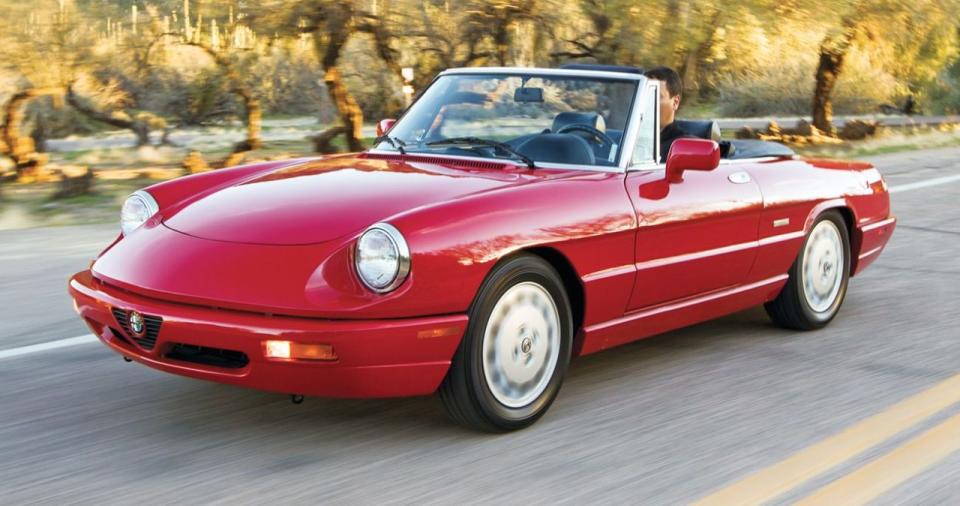
1992 Alfa Romeo Spider Veloce, owned by Arno Leskinen.
The Mazda Miata-based Fiat Spider that will debut in 2016 was originally intended to be a new Alfa Romeo Spider, but perhaps it’s best to remember the roadster that was instead of the multinational product that might have been. For a generation of Americans that were introduced to the joys (and pitfalls) of Italian sports cars by the Alfa Romeo Spider, there’s no denying that it left a lasting impression.

“The Ultimate in Rolling Comfort:” George Barris’s SuperVan
What cars are on your Powerball shopping list?
The Race of Gentlemen moves, adds West Coast date


